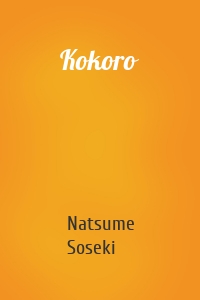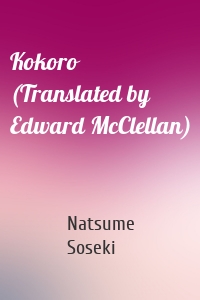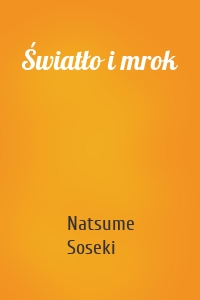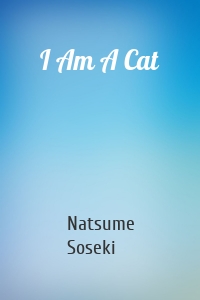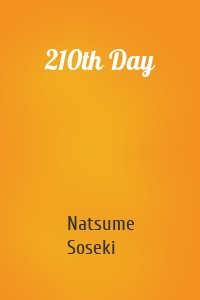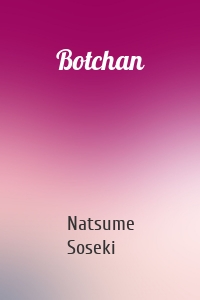Natsume Soseki
11 кн.
Kokoro
Literally meaning «heart», the Japanese word «kokoro» can be more distinctly translated as «the heart of things» or «feeling.» Natsume Soseki's 1914 novel, which was originally published in serial format in a Japanese newspaper, «Kokoro» deals with the transition from the Japanese Meiji society to the modern era. Divided into three parts «Sensei and I,» «My Parents and I,» and «Sensei and His Testament,» the novel explores the themes of loneliness and isolation. In the first part we find...
| Автор | Natsume Soseki |
My Individualism and the Philosophi...
Published here for the first time in English, My Individualism and The Philosophical Foundations of Literature are essays which explore issues close to famed Japanese novelist Soseki Natsume's heart: the philosophical and cultural significance of isolation, belonging and identity associated with rapid technological, industrial and cultural change. Set against the background of the Meiji era, in which Soseki believed modern man was dislocated from Japan's past as well as its future, he...
| Автор | Natsume Soseki |
Kokoro (Translated by Edward McClel...
Literally meaning “heart”, the Japanese word “kokoro” can be more distinctly translated as “the heart of things” or “feeling.” Natsume Soseki’s 1914 novel, which was originally published in serial format in a Japanese newspaper, “Kokoro” deals with the transition from the Japanese Meiji society to the modern era. Divided into three parts “Sensei and I,” “My Parents and I,” and “Sensei and His Testament,” the novel explores the themes of loneliness and isolation. In the first part we find the...
| Автор | Natsume Soseki |
I Am A Cat
"A nonchalant string of anecdotes and wisecracks, told by a fellow who doesn't have a name, and has never caught a mouse, and isn't much good for anything except watching human beings in action…" —<b>The New Yorker</b> <br><br>Written over the course of 1904-1906, Soseki Natsume's comic masterpiece,<i> I Am a Cat</i>, satirizes the foolishness of upper-middle-class Japanese society during the Meiji era. With acerbic wit...
| Автор | Natsume Soseki |
210th Day
First published as Nihyaku Toka in 1906, The 210th Day is published here for the first time in English. Focusing on two strongly contrasting characters, Kei and Roku, as they attempt to climb the rumbling Mount Aso as it threatens to erupt, it is a celebration of personal experience and subjective reaction to an event in the author's life. During their progress up the mountain—where they encounter a storm on the 210th day (the lunar calendar day traditionally associated with...
| Автор | Natsume Soseki |
To the Spring Equinox and Beyond
This classic Japanese story by Soseki Netsume—the foremost novelist of the Meiji Period—is a masterpiece of Japanese literature.This book demonstrates Soseki Natsume's ability to dissect and elucidate the human personality in all its complexity. Here, his facile blending of narrative, extended monologue and sharp dialog leaves the reader with an almost personal knowledge of the characters. We are introduced to Keitaro, a recent college graduate hunting for his first job;...
| Автор | Natsume Soseki |
Botchan
A modern classic in Japan on par with The Adventures of Huckleberry Finn or The Catcher in the Rye, Botchan is a very popular Japanese novel and still widely read decades after its first publication. Botchan , a timeless Japanese novel written by Japan's most beloved novelist, Soseki Natsume, is now available in a revised edition featuring a new foreword by Dennis Washburn, Professor of Asian and Middle Eastern Languages at Dartmouth College. Prof. Washburn's foreword places the...
| Автор | Natsume Soseki |
Inside My Glass Doors
Originally published as Garusudo no Uchi in daily serialization in the Asahi newspaper in 1915, before appearing in book form, this is the first time Inside My Glass Doors has been published in English. It is a moving literary reminiscence, a collection of thirty-nine autobiographical essays penned a year before the author's death. Written in the genre of shohin (little items), the personal vignettes provide a kaleidoscopic view of Natsume Soseki's private world and shed light on his...
| Автор | Natsume Soseki |


